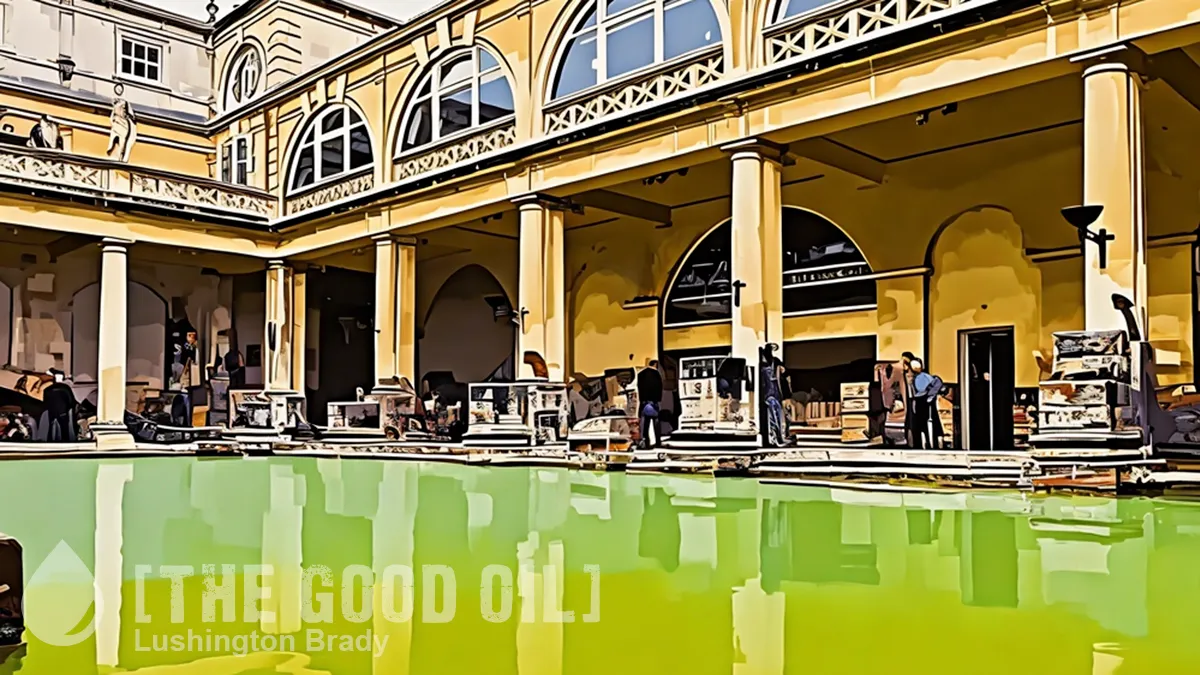Table of Contents
Josh Van Veen
Victoria University Of Wellington – Te Herenga Waka
democracyproject.nz
Josh Van Veen is an Auckland-based writer and political analyst. He is currently the Chair of Progress New Zealand, an independent research and advocacy group established to promote democratic citizenship and social cohesion. A former member of NZ First, he worked as a parliamentary researcher to Winston Peters from 2011 to 2013. Van Veen has a Masters in Politics from the University of Auckland. His thesis examined class voting in Britain and New Zealand.
There was an air of moral superiority when Grant Robertson declared, in closing his Budget 2020 address, that Labour understood what it meant to have a “genuine partnership between Government and the people”. He was implying that his opponents did not.
In Robertson’s mind, political debate is a binary choice between those who believe in using the coercive power of the state to make life ‘fairer’ and those who don’t. You must be for the poor or against them. Such a Manichaean worldview is typical of partisans, be they of the left or the right. Robertson’s critics would respond in kind. Labour was choosing to borrow and spend on ‘feel good’ policies when it had a moral imperative to reduce public debt.
But history was on Labour’s side. After all, the First Labour Government is revered for its policies of full employment and cradle-to-grave welfare. The ‘Trinity’ of Michael Joseph Savage, Peter Fraser and Walter Nash saved New Zealand from the Great Depression, transforming it into a country where even the poor could live well. “They built houses, rail and roads, they created the welfare state and a strong public health system,” Robertson lectured.
The alternative was for the government to sit on the sidelines. That would only lead to carnage; as it had in the 1980s, when “lives and livelihoods were lost” for the sake of market efficiency. Never again. Robertson vowed that the Ardern Government would protect the most vulnerable from capitalism. He was going to rebuild New Zealand in the tradition of Savage, Fraser and Nash. Labour had imbued the moral lessons of history. The other side was just cold and stupid.
At least one of those listening to Robertson’s speech had cause to question this Labour interpretation of history. Dr Bryce Wilkinson, economist and Senior Fellow at The New Zealand Initiative, recently published a detailed critique of the Robertson narrative. In an 80-page report, The Illusions of History, Wilkinson demolishes the myth – beloved of the left – that the First Labour Government was responsible for ending the Great Depression.
In fact, Wilkinson argues, Labour had the good fortune to be elected at a time when the economic recovery was well underway. Export prices and gross domestic product (GDP) had increased significantly under the outgoing Coalition Government of George Forbes and Gordon Coates. Furthermore, as historian Malcolm McKinnon suggests in his book The Broken Decade, the 1935 election was more a return to pre-Depression politics of expansionism than a radical break from the past. Labour and its rivals debated when and how much to spend, rather than what to spend it on.
Of course, Labour would out-spend its opponents any day. For a time it could do so while running surpluses. But unemployment and public debt remained stubbornly high. In the end, as Wilkinson argues, the First Labour Government’s profligacy caught up with it. Spending on import-dependent public works led to a balance of trade deficit and contributed to the foreign exchange crisis of 1938. If not for the intervention of the Bank of England it is quite possible the Government would have defaulted on its debt. The outbreak of war in 1939 proved a much greater economic stimulus than any government policy.
These are historical facts that will make uncomfortable reading for those who deify Savage and romanticise the First Labour Government. Not that they are likely to give Wilkinson credence. As a young Treasury economist, he co-authored the plainly titled Economic Management. A briefing paper for the new Fourth Labour Government in 1984, it provided the blueprint for radical market reforms that were to be enacted by Minister of Finance Roger Douglas. In time, Douglas would become the bête noire of Labour partisans like Robertson, who see the reforms as a moral outrage.
For a generation of progressive-minded New Zealanders that has grown up since 1984, ‘Rogernomics’ is the original sin. Jobs were lost, businesses collapsed, and the tightly-woven social fabric of post-war New Zealand was torn apart. We have never recovered. Critics assert that the reform agenda was ‘extreme’ and ‘undemocratic’. Not only that, but it failed to restore the New Zealand dream. It was that dream Robertson evoked with a line purloined from William Blake’s poem Jerusalem and misattributed to his hero Fraser. New Zealand, he said, was once “a green and pleasant land”. But for those families trapped in a cycle of intergenerational poverty, life is anything but green and pleasant.
That is why Wilkinson’s revisionism also serves as an apologia for the Fourth Labour Government. As he argues in his concluding chapter, social dislocation was inevitable. The foreign exchange crisis of 1984 proved that New Zealand could no longer hide from global economic forces. But our command-and-control economy, a relic from the Depression-era, was not equipped to respond to globalisation. It is Wilkinson’s belief that had it not been for the ‘shock therapy’ of Rogernomics we may have experienced a lot worse. Our peak unemployment rate of 10.7 percent in 1992 could have been much closer to Spain’s 19.8 percent.
But the reforms did not end with the Fourth Labour Government. They were continued by the National Government of Jim Bolger in 1990-93. Major cuts to welfare spending, deregulation of the labour market, and reforms in the health sector were introduced. This agenda was led by Ruth Richardson, who Wilkinson clearly admires (“Brave, determined, vigorous and principled”). Despite academics from the University of Auckland claiming austerity would “only depress the economy further”, New Zealand went on to have the highest employment growth in the OECD between 1991 and 1996. According to Wilkinson this is proof positive that market liberalisation worked.
However, academics and commentators have often overlooked the social democratic character of the Fourth Labour Government. In doing so, they blur the lines between Rogernomics and ‘Ruthanasia’. Douglas and his Cabinet colleagues never intended to abolish the welfare state. On the contrary, distributive justice remained a priority for that government. Expenditure on health, education and welfare was increased significantly. As a percentage of GDP, real spending per capita went up from 4.4 percent in 1976 to 5.7 percent in 1990.
Tax reform provided relief to low and middle-income families, while beneficiaries were given substantial income exemptions and abatement rates. However, the Fourth Labour Government did cancel the universal family benefit in favour of a more targeted approach. This represented a significant departure from the approach of past governments. But as Wilkinson puts it: “…welfare spending per capita even in 1992 was appreciably higher than in earlier decades.” History is more complicated than simplistic narratives have us believe. Many of the ‘New Right’ policies that Richardson argued for, such as privatisation in health and labour market deregulation, did not sit comfortably with the ethos of the Fourth Labour Government.
It is easy to forget the Rogernomes were part of a government that used the state to promote wider social justice. Gender equality was made a serious priority with the passage of the Employment Equity Act and a new Ministry of Women’s Affairs. A M?ori housing scheme was introduced, the Waitangi Tribunal was given the power to investigate Treaty claims back to 1840, and Te Reo M?ori became an official language backed by an official body. The Fourth Labour Government also rewrote the country’s immigration laws to end racial discrimination at the border.
These were major achievements that had a lasting impact on New Zealand politics and society. In fact, this progressive social agenda formed a key part of the policy paradigm that developed out of the 1980s. The Bolger Government largely continued Labour’s work, advancing the Treaty settlement process, and passing specialised anti-discrimination legislation. On cultural and economic policy the two major parties found consensus. However, Labour opposed National’s attempts to introduce a more laissez faire approach to social policy.
Ultimately, National failed in its New Right agenda. The election of a centre-left coalition in 1999 reversed market reforms in health, housing, and employment relations. The Labour-led Government of Helen Clark did not repudiate the main tenets of the post-1984 consensus, however. Clark and her finance minister, Michael Cullen, had both served in the Fourth Labour Government. They were social democrats who embraced fiscal conservatism.
The emphasis was on maintaining business confidence through low inflation, low taxes, and a high degree of economic freedom. To this end, the Clark Government avoided major reform to address unfairness in the tax system. The Clark Government also refused to increase core benefit rates above inflation. Welfare remained targeted, with the focus on personal responsibility and incentives to work. It is still the approach.
That unholy marriage between ‘neoliberalism’ and social justice is at the heart of our politics today. Ardern and Robertson might have given the welfare state a new veneer of kindness. But they can offer nothing more. Those progressives who demand the equitable distribution of wealth and power will have to reconcile themselves to the ultimate illusion of history: neoliberalism is just another name for social democracy.
This article can be republished under a Creative Commons CC BY-ND 4.0 license. Attributions should include a link to the Democracy Project.
Please share this article so that others can discover The BFD.








